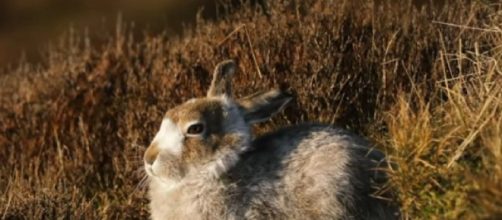Mountain hares in England could be on the verge of extinction because of climate change. This is based on the study undertaken by a wildlife researcher from Manchester Metropolitan University. He is Carlos Bedson, and he has studied these animals for the last five years. He estimates only 2,500 of them are surviving in the Peak District in Derbyshire. He explains these are Arctic species, and with global warming dominating the higher altitudes, the hares would have to keep going to higher regions. He fears their numbers could reduce further, and within another three decades, they might no longer exist.
The reason is their inability to adapt to high temperatures.
Sky News says the fur of these animals changes color to protect them against predators. The color is white in winter to merge with the surrounding color of snow and changes to brown in summer to merge with the foliage. The animals went extinct in England and Wales nearly 6,000 years ago. Subsequently, in the 1870s, there was an effort to reintroduce them. It succeeded only in the Peak District. The situation in Scotland is better where numbers are more. It treats unlicensed culling of mountain hares as a criminal offense.
The primary food source of mountain hares is affected by climate change
An official of the Department of Food Environment and Rural Affairs (Defra) informs the authorities are aware of the need to extend protection to this species left in England.
He explains one threat these animals face is hunting. Moreover, many of them are lost in road accidents when they enter human habitats in the Peak District. However, climate change remains a matter of concern. This is because heather is their main source of food, and a hotter climate impacts heather. Thereby, a situation arises where the mountain hares have to compete for food with other hares. Incidentally, climate change is a threat to the mountain hares of Scotland also.
Mountain hares have to battle climate change
Nida Al-Fulaij, who is associated with People's Trust for Endangered Species says: "The threat of climate really is scary because there's very little we can do.” In 2018, there was a heatwave, and wildfires destroyed the moorlands.
The result was the loss of habitat for large numbers of wildlife, including these hares. Conservationists are trying to repair the damage. They have undertaken various activities to transplant different types of plants. The intention is to re-vegetate the wetland habitat. The mountain hares can thrive in a harsh environment. In February 2018, the media reported about starving polar bears in the Arctic because of climate change
Conservation group blames climate change for the fate of mountain hares
According to The BBC, the People's Trust for Endangered Species PTES is a conservation group that is funding research on the declining numbers of mountain hares in England. Experts attribute this to global warming.
Nida Al-Fulaij of PTES says: “These hares could be in trouble." This species became extinct during the last ice age. However, in the late 1800s, they returned, and the animals survived in the Peak District. The climate's nature suited them passable, and the colder climate turned out to be an ideal habitat for them. However, the erratic weather and climate change are increasing risk to their survival. They lose out on camouflage during winter due to the reduction of the snow cover. That adds to the dangers they face. Climate change left Arctic polar bears hungry, and they invaded a Russian settlement in search of food. The world must realize the dangers of global warming and prevent the generation of greenhouse gases. One method to do this s to avoid fossil fuels and switch over to renewable energy.


